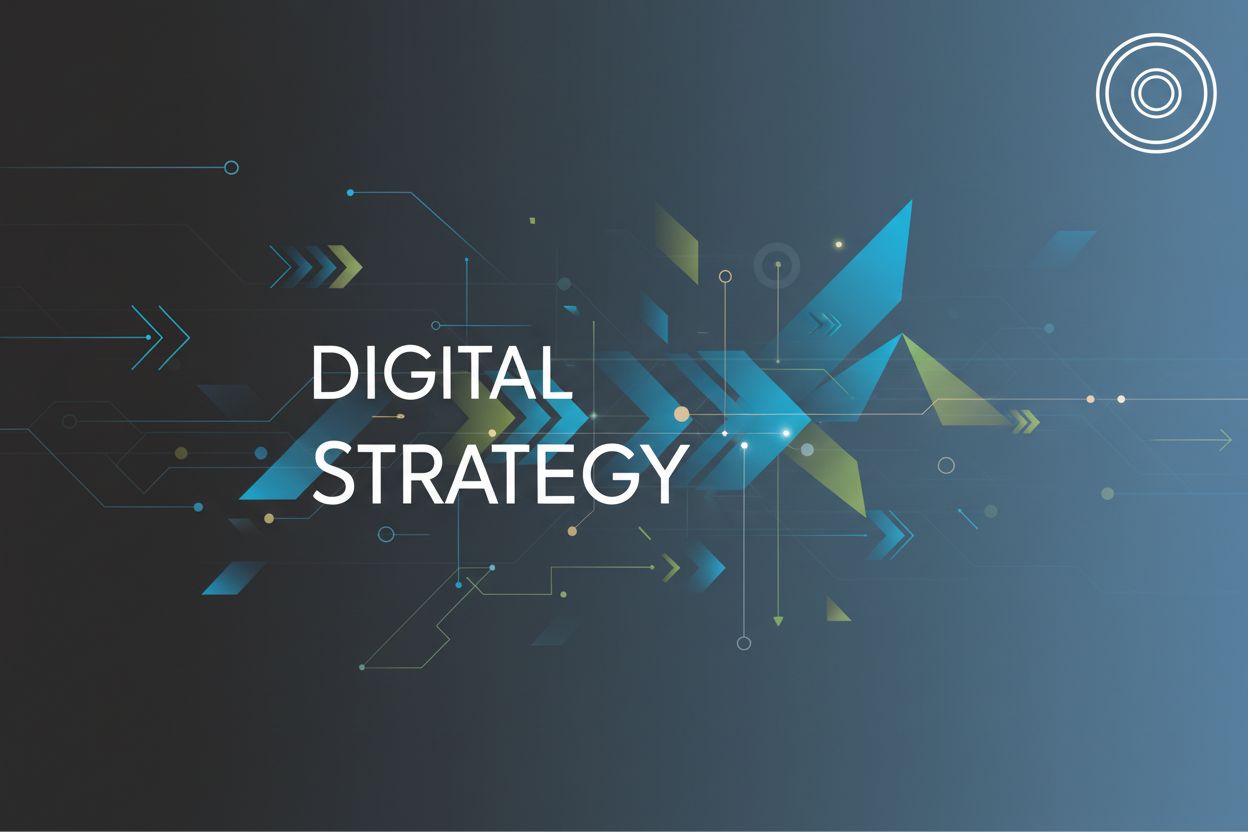Strategic Assumptions in Digital Transformation
TL;DR
The Hidden Landmines: Why Strategic Assumptions Matter
Alright, so you wanna know why strategic assumptions really matter in digital transformation? Think of it this way: ever tried building a house on a swamp? Didn't think so.
Thing is, digital transformation ain't just slapping some new tech on old processes. It's way more like rebuilding that house – foundations and all, and that's where those sneaky assumptions come in.
Essentially, strategic assumptions are those foundational beliefs we have when we're making big decisions. They're what we think is true about our customers, our tech, and even our own company, but maybe haven't really checked.
Assumptions are those foundational beliefs. They're what we take as gospel when we're charting our digital course. Like assuming your customer base is totally ready to ditch paper statements for an app—big assumption!
Flawed assumptions can lead to flawed strategies. (How can the wrong assumptions impact your business strategy?) Imagine a healthcare provider assuming all patients have reliable internet access for telehealth appointments. A big chunk of their patient base might get left out, right?
Examples of strategic assumptions? Customer readiness is a big one. Also, tech adoption rates, and even how quickly your own employees will get on board with new systems. Do you really know what your customer wants?
So, what happens when these assumptions crash and burn? It's not pretty, trust me.
Project failures and budget overruns? Incorrect assumptions are a prime suspect. A retail chain might assume a new personalization engine will boost sales by 20%, but if customers find it creepy and invasive, well, there goes that ROI.
Brand reputation takes a hit. What if your assumption about the customer base being mobile-first is incorrect? You might end up alienating a whole segment of your clients.
Missed opportunities and competitive disadvantage? Absolutely. If you're so busy chasing the shiny new ai thing, you might fail to address current needs.
It's like that time I spent hours setting up this fancy email campaign, assuming everyone would click on it...only to realize half my list was outdated. Ouch.
You'd think we'd learn, right? But assumptions are sneaky little things.
Cognitive biases and groupthink play a role. Ever been in a meeting where everyone just agrees without questioning anything? That's groupthink in action.
Lack of formal processes. Many companies don't have a process for identifying and validating assumptions. It's just "go, go, go!"
Pressure to act quickly? Embrace the 'next big thing'? Sure, but not without thinking it through first.
So, we've established that bad assumptions can really mess things up. Next, we'll dig into strategies for uncovering those hidden landmines before they blow up in our faces.
Unearthing Your Assumptions: A Practical Guide
Okay, let's dig into unearthing those sneaky assumptions. It's like trying to find your keys when you're already late – stressful, but gotta do it.
So, how do we even start finding these assumptions? A good way is to get everyone in a room and just start throwing ideas around. I mean, it sounds simple, but it’s more than just a meeting, you know?
Facilitating brainstorming sessions is key. You gotta create an environment where people feel safe to voice what they think is going on, even if it sounds kinda dumb at first. Think about setting ground rules: no interrupting, all ideas are valid, and quantity over quality in the beginning. This helps avoid that whole "groupthink" thing we talked about earlier.
Using assumption logs and risk registers is also useful. Basically, you're writing down all the "what ifs" and "we believes" related to the project. For example, "We assume customers will find the new app intuitive." Then, you track if that assumption holds true, and the risks if it doesn’t.
Creating a culture of open communication is arguably the most important. It's not just about those initial sessions. It's about ongoing chats, feedback loops, and making it okay to say, "Hey, I'm not so sure about this…" If your team is afraid to challenge assumptions, you’re sunk.
It's like that time I was working on a project, and everyone just assumed the client understood this one technical term. Turns out, they didn't have a clue, and we wasted a week building something based on a misunderstanding. Could've been avoided with a simple, "Hey, just checking, are we all on the same page with this lingo?"
Ever heard of the "Five Whys" technique? It's not just for fixing broken machines; it's great for digging into assumptions, too.
Applying the 'Five Whys' gets to the root of it all. It's simple: You start with an assumption and ask "why" five times to get to the underlying belief.
For example: "Why do we believe our customers will embrace this new ai-powered app?"
- Why? "Because it’s more efficient."
- Why? "Because it automates tasks."
- Why? "Because customers want to save time."
- Why? "Because our research shows they are time-strapped."
- Why? "Because they've told us in surveys and interviews."
See how you get from a general idea to the actual evidence?
- Uncovering hidden beliefs is the goal. Maybe you'll find out the 'research' was just one informal chat, not a real study. Or maybe you'll realize you're projecting your own desires onto the customer.
Don't forget about your brand! Sometimes, the assumptions are baked right into your brand itself.
Brand audits can reveal unspoken assumptions. How do you think customers see your brand? Is that how they actually see it? For example, do you think of your brand as "innovative," but customers see it as "expensive"? A brand audit can show you the gap.
Use audit findings to refine assumptions. Once you know where the disconnects are, you can start tweaking your assumptions and adjusting your digital strategy to align with reality. It's also important to look into what your customer persona wants.
Ensuring brand consistency is key. All this digging makes sure your brand is sending the right message, everywhere, all the time. This is crucial if you're trying to transform digitally, 'cause you want to make sure your brand doesn't get lost in the shuffle.
So, now we've got some tools to unearth those pesky assumptions. Next up, we'll look at how to actually validate them.
Validating (or Debunking) Your Assumptions: Testing and Data
Okay, so you've dug up all these assumptions, now what? Time to put 'em to the test- like that time I tried to assemble Ikea furniture without the instructions. Let's just say, data would've been really helpful.
First off, we gotta talk data, baby! It ain't enough to just think something's true, you gotta prove it. And how do you prove it? Metrics, that's how.
Identifying key performance indicators (kpis) is crucial. Think of kpis as your assumption's report card. Wanna know if customers really love that new app feature? Track how many people are actually using it, how often, and for how long. If nobody's touching it, Houston, we have a problem. For example, a bank assuming customers want mobile check deposit needs to track mobile deposit usage rates. If those rates are low, it's time to rethink that assumption.
Leveraging analytics tools is a must. Google Analytics, Adobe Analytics—whatever you've got, use it. These tools are your microscope, letting you zoom in on customer behavior and engagement. Are folks bouncing off your landing page faster than a rubber ball? Maybe your messaging isn't hitting the mark. A marketing team, for instance, might assume a certain ad campaign resonates, but analytics could reveal high bounce rates, showing the assumption doesn't hold water.
Using data to confirm or refute initial assumptions – that's the whole point! Don't just collect data for the sake of it; use it. If your assumption was wrong, don't be afraid to admit it and pivot. It's better to course-correct early than to sink more resources into a failing strategy. A healthcare provider assuming patients want telehealth appointment reminders via SMS should analyze if click-through rates on those messages are high. If not, maybe email or app notifications are a better bet.
A/B testing and minimum viable products? These are your weapons of choice for validating assumptions in the real world.
Employing a/b testing helps validate assumptions about website design, messaging, and features. It's like a science experiment for your website. Try two different versions of a landing page and see which one performs better. For instance, a retail site might test two different checkout flows. If version a has a higher conversion rate, you know that design resonates more with customers.
Developing minimum viable products (mvps) is key to test assumptions about product viability. Don't spend months building a full-fledged product only to find out nobody wants it. Launch a basic version with core features and gather feedback. For example, a new fintech app might launch with just basic budgeting features. User feedback and adoption rates then guide future development.
Iterating based on real-world feedback and data ensures you're building something people want. Don't get attached to your initial ideas. Be willing to tweak, change, or even scrap them based on what the data tells you. A software company, for example, might initially assume users need feature x. However, mvp feedback shows users are more interested in feature y, so the company pivots to focus on that instead.
Numbers are great, but sometimes you need to hear what people really think, y'know?
Conducting customer interviews and surveys is crucial to gather qualitative data. These conversations can unearth insights that numbers alone can't reveal. Why are customers really churning? What do they actually think about that new branding? A food delivery service might conduct interviews to understand why customers are switching to competitors. These conversations could reveal unmet needs like faster delivery times.
Analyzing customer feedback will help identify potential flaws in assumptions. Pay attention to what customers are saying in reviews, social media, and support tickets. Are they complaining about the same things over and over? That's a red flag. An e-learning platform might notice a recurring theme in customer reviews: difficulty navigating the course catalog. This indicates a flaw in the assumption that the platform is user-friendly.
Integrating qualitative insights with quantitative data is the way to get a holistic view. Use qualitative data to add color and context to your quantitative findings. Numbers tell you what is happening; qualitative insights tell you why. If a drop in sales coincides with negative feedback about a price increase, you've got a pretty clear picture. Maybe you can consider a customer persona.
Validating assumptions ain't easy, but it's necessary. Next up, we'll look at how to actually act on what you've learned.
Adapting and Evolving: The Agile Approach to Assumptions
Alright, so you're thinking about how to keep your digital transformation from going totally off the rails, huh? It's like trying to herd cats, I swear. But trust me, with the right mindset and some good habits, you can actually make it work.
First, ditch the idea of a rigid plan set in stone. Seriously, those plans are usually outdated before you even finish writing them. You've gotta be agile – nimble, quick, ready to change direction on a dime. That means:
- Embrace change, don't fight it. It's like that old saying, "The only constant is change," especially in the digital world. So, if new data comes in that flips your assumptions on its head, pivot. Don't be stubborn, just adjust.
- Flexibility over rigidity. Don't get too attached to your initial vision, or you might miss out on better opportunities. A lot of companies falls into this trap, they want the old methods.
- Experiment, learn, repeat. Think of your transformation as a series of experiments. Some will work, some will fail, but every single one will teach you something valuable. You need to experiment, or you will be stuck.
"Set it and forget it" is a recipe for disaster in digital transformation. You need regular reviews and adjustments to make sure you're actually heading in the right direction. It's like a road trip – you gotta check the map and make course corrections along the way.
- Schedule regular reviews. Mark it on the calendar, no excuses. Whether it's monthly, quarterly, or whatever works for you, make sure you're taking the time to step back and assess.
- Use data to guide you. Remember all that data you're collecting? Use it! A study showed that data is key. Is it telling you that your strategy is working? Great. If not, time to tweak things.
- Don't be afraid to adjust. If something ain't working, change it! Don't keep banging your head against a wall.
Life throws curveballs, and digital transformation is no exception. That’s why you need scenario plans – basically, different versions of your strategy that account for different potential outcomes.
- Think through different possibilities. What if a competitor releases a game-changing product? What if there's a major economic downturn? What if your tech vendor goes belly up?
- Identify trigger points. What are the signs that one scenario is becoming more likely than another? What needs to happen for you to shift strategies?
- Build resilience. This isn't about predicting the future, it's about being prepared for whatever comes your way. That's the key to success.
Look, nobody has a crystal ball, but by being adaptable, regularly reviewing your progress, and planning for different scenarios, you're way more likely to navigate the twists and turns of digital transformation and actually come out on top.




